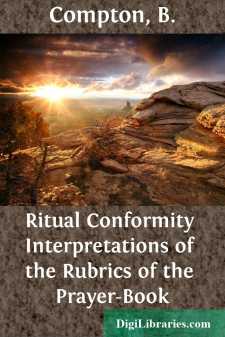Categories
- Antiques & Collectibles 13
- Architecture 36
- Art 48
- Bibles 22
- Biography & Autobiography 813
- Body, Mind & Spirit 142
- Business & Economics 28
- Children's Books 17
- Children's Fiction 14
- Computers 4
- Cooking 94
- Crafts & Hobbies 4
- Drama 346
- Education 46
- Family & Relationships 57
- Fiction 11829
- Games 19
- Gardening 17
- Health & Fitness 34
- History 1377
- House & Home 1
- Humor 147
- Juvenile Fiction 1873
- Juvenile Nonfiction 202
- Language Arts & Disciplines 88
- Law 16
- Literary Collections 686
- Literary Criticism 179
- Mathematics 13
- Medical 41
- Music 40
- Nature 179
- Non-Classifiable 1768
- Performing Arts 7
- Periodicals 1453
- Philosophy 64
- Photography 2
- Poetry 896
- Political Science 203
- Psychology 42
- Reference 154
- Religion 513
- Science 126
- Self-Help 84
- Social Science 81
- Sports & Recreation 34
- Study Aids 3
- Technology & Engineering 59
- Transportation 23
- Travel 463
- True Crime 29
Ritual Conformity Interpretations of the Rubrics of the Prayer-Book
by: B. Compton
Description:
Excerpt
PREFACE.
At a Conference of some friends interested in the subject of Ritual, held on January 17, 1880, the following propositions were, amongst others, agreed to:
I. That the evil of unnecessary Diversity in Ritual, as practised in various Churches aiming at the maintenance of Catholic doctrine and usage in the Church of England, is real and great.
II. That an effort to moderate it should be attempted, resting mainly on the united opinion of some of those who have given special attention to the theory and practice of Ritual, in their private capacity of Students or Parish Priests.
III. That the effort should take the form of a body of Comments upon the Rubrics of the Book of Common Prayer, and that these Comments should include cautions against practices which are infractions of the law and usage of the Church of England.
With the view of carrying these propositions into effect, it was arranged that a series of meetings should be held; and the Vicar of All Saints, Margaret-street, kindly provided a room at the clergy-house for the meetings of the Conference.
Those who had met in the first instance were duly summoned, and others were invited to join them. The meetings were held at first on two consecutive days in alternate weeks, (since some of the members came from a considerable distance). Latterly, in order to expedite the work, meetings were held on three consecutive days in alternate weeks. In all, forty-eight meetings were held between January 17, 1880, and July 13, 1881.
It was thought possible that by the co-operation of several minds, information might be collected from sources not commonly accessible, and perhaps hardly within the reach of any one individual. Among the members of the Conference also were those who had had experience of parish-work, as well as those who had devoted time and attention to historical enquiry into the origin and meaning of the Rubrics of the Prayer-Book, or who had made ancient Liturgies their special study: some, it may be added, combined these various qualifications. A hope therefore was entertained, as the second proposition implies, that by considering on very wide grounds (both practical and historical), and not from any one point of view, the various divergencies of ritual practice, some agreement might be arrived at even on the most controverted points.
This hope has been realized. It was found that points which seemed at first to afford no basis on which agreement was at all probable, were settled, after long discussion, almost (if not quite) unanimously; but this involved expenditure of time, and much investigation into matters on which existing text-books were often silent.
With regard to the actual diversities in ritual which came under the attention of the Conference, some appeared to be such direct infractions of the Rubrics that no explanation of the Rubrics could make their irregularity more evident. Others seemed to arise from well-meant attempts to interpret the Rubrics. These last formed the chief subject of the labours of the Conference....


